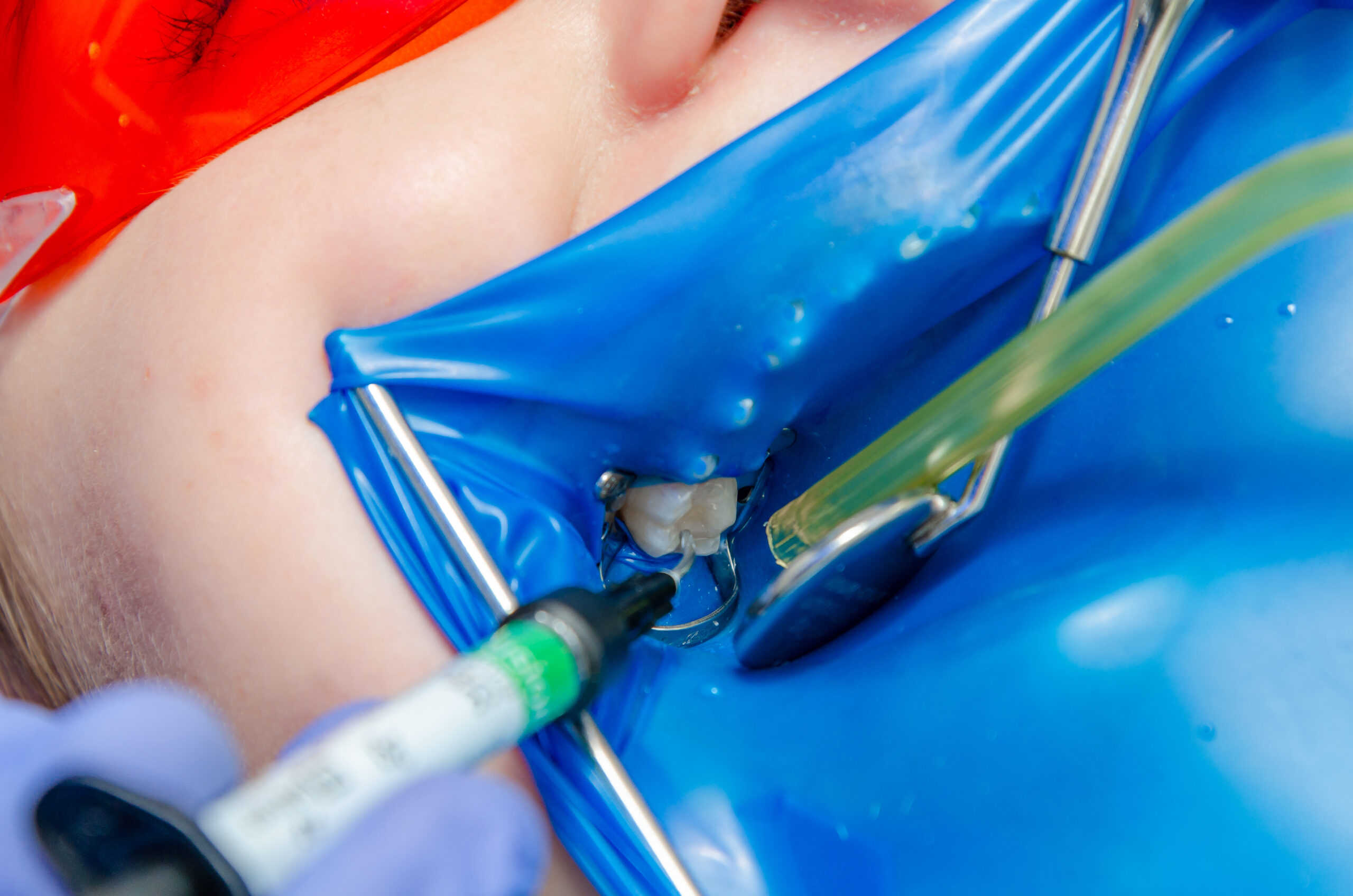
The Effect of Rubber Dam Isolation on Bond Strength to Enamel
Christopher Mazzola, DDS
This is an example of a clinical study that can help us in our everyday practice of dentistry. Although the findings do not surprise us, keeping the findings in mind will guide us in decisions we make when performing treatments our patients are counting on to be long lasting.
Dr. Markus Blatz is co-founder and past President of the International Academy for Adhesive Dentistry (IAAD) and Chairman of the Department of Preventive and Restorative Sciences and Assistant Dean for Digital Innovation and Professional Development at the University of Pennsylvania School of Dental Medicine in Philadelphia. He and a research team from the University of Coimbra, in Portugal, studied the effect of rubber dam isolation on bond strength to enamel. Their goal was to test two hypotheses.
Hypothesis 1: Rubber dam isolation improves sheer bond strength independent of the adhesive system used.
Hypothesis 2: A highly filled 3-step etch and rinse adhesive will provide higher bond strength values than an isopropyl-based universal adhesive.
For their tests, they used OptiBond FL from Kerr for the 3-step etch and rinse adhesive and Prime & Bond Universal Adhesive for the isopropyl-based universal adhesive.
The mesial, distal, lingual, and vestibular enamel surfaces of thirty human third molars were prepared (total n = 120 surfaces). A custom splint was made to fit a volunteer’s maxilla, holding the specimens in place in the oral cavity. Four composite resin cylinders were bonded to each tooth with one of two bonding agents (OptiBond FL and Prime & Bond) with or without rubber dam isolation. Shear bond strength was tested in a universal testing machine and failure modes were assessed.
Both hypotheses were supported by the results reported in the Journal of Esthetic and Restorative Dentistry in November of 2022.
- With the rubber dam in place, both of the adhesives performed better than without the rubber dam in place, resulting in approximately twice as much shear bond strength with the rubber dam.
- The 3-step OptiBond FL system resulted in a more resilient bond than the Prime & Bond Universal adhesive. The OptiBond FL group with rubber dam presented the highest mean bond strength values. Fracture modes for specimens bonded without rubber dam isolation were adhesive and cohesive within enamel, while rubber dam experimental groups revealed only cohesive fractures.
For the benefit of our patients, we shouldn’t cut corners that will impact the longevity of a restoration. My thoughts are that whenever we have basic pure enamel bonding it should be under a rubber dam, using a total etch, 3-step adhesive system. But considering dentin likes to be moist, we may need to make other clinical judgments.
Related Course
Surgically Facilitated Orthodontic Therapy
DATE: October 10 2024 @ 8:00 pm - October 10 2024 @ 9:00 pmLocation: Online
CE HOURS: 1
Date: October 10, 2024 Time: 8 – 9 pm ET Speaker: George Mandelaris, DDS, MS COURSE DESCRIPION Patients seeking ideal esthetics may require a more sophisticated diagnosis and treatment plan…
Learn More>






